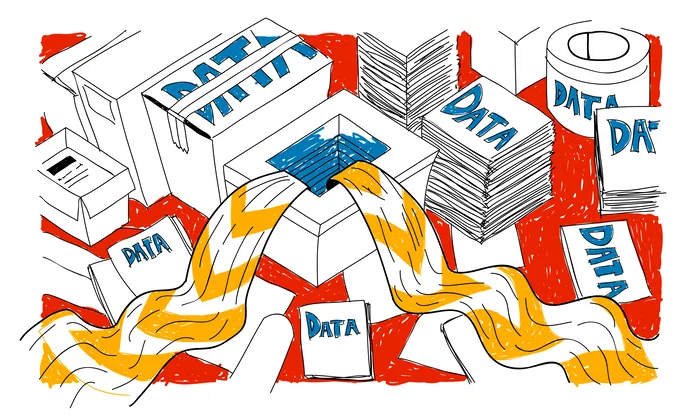What factors differentiate in-car speech datasets from general speech datasets?
In-Car Speech
Speech Datasets
Audio Analysis
As voice-activated technology becomes more embedded in the automotive industry, in-car speech datasets have become indispensable for building highly accurate and effective AI systems. These specialized datasets are designed to overcome the unique challenges presented by the vehicle environment. This is in contrast to general speech datasets, which are often recorded in controlled settings. Understanding the distinctions between these datasets is essential for AI engineers, product managers, and researchers working on advanced speech recognition systems tailored for automotive applications.
Why Acoustic Conditions Matter
In-car speech datasets capture data within the confines of a vehicle, where factors like background noise and microphone placement significantly affect the clarity of recorded speech. These challenges are unique to the automotive environment:
- Background Noise: From engine sounds to road noise and in-car audio systems, vehicles produce a variety of sounds that can impact Automatic Speech Recognition (ASR) models. Proper training on this noise is critical for accuracy.
- Microphone Placement: Vehicle microphones are positioned in different places on the dashboard, near the headrests, or in the center console. Each placement introduces unique echo patterns and distortion that models must learn to handle effectively.
Authentic Data Gathering in Diverse Conditions
Unlike general speech datasets, which are often recorded in controlled studio settings, in-car speech datasets are gathered under real-world driving conditions:
- Diverse Driving Scenarios: These datasets capture speech from drivers in varied environments like urban streets, highways, and rural roads ensuring the data reflects the wide range of conditions a vehicle encounters.
- Multiple Speaker Profiles: With contributions from a broad demographic range, in-car datasets capture accents, speech rates, and emotional tones, helping AI models generalize to different user profiles and environments.
Emphasis on Context-Rich Interactions
In-car datasets prioritize context-rich, natural speech interactions, including:
- Wake Words: Phrases that trigger the voice assistant system.
- Command Sequences: Multi-turn dialogues that facilitate complex interactions between the driver and the system.
- Emotional Speech: Capturing tones that indicate urgency or emotional states, which are essential for applications like fatigue detection.
In contrast, general datasets often focus on scripted or read speech, which lacks the dynamic and spontaneous nature critical for automotive applications.
Detailed Annotations for Effective Training
The success of ASR models hinges on the accuracy and richness of the annotations within the dataset:
- Intent Tags: Identifying commands, queries, and emotional utterances for better context understanding.
- Noise Labels: Annotating environmental sounds (e.g., rain, honking, music) that could interfere with speech clarity.
- Speaker Metadata: Information about the speaker's role (driver or passenger), age, gender, and dialect improves model adaptability.
General datasets typically don’t offer such detailed annotations, limiting their application for specialized use cases like in-car systems.
Real-Time Adaptation and User Interaction
Dynamic AI Systems
In-car AI systems are designed to adapt in real-time, adjusting to the auditory environment with dynamic noise suppression and context-aware algorithms. This allows the system to maintain performance even as conditions change while the vehicle is in motion.
User Interaction Tracking
Continuous data collection with user consent allows for ongoing refinement of AI models. This real-time feedback loop helps engineers and product managers continuously improve system accuracy and overall user experience.
Transforming Automotive Experience
In-car datasets enable a wide range of automotive applications:
- Voice-Controlled Infotainment: Hands-free control of navigation, music, and other in-car systems.
- Emotion-Aware AI: Detecting stress or fatigue through voice tone analysis to enhance safety.
- Multilingual Voice Assistants: Ensuring accessibility for global users by supporting various languages and dialects.
For example, a luxury electric vehicle brand might train a multilingual voice assistant using 500 hours of in-car speech data, ensuring seamless interactions across diverse language groups.
Conclusion: The Path Forward with In-Car Speech Datasets
Specialized in-car speech datasets are essential for developing high-performing AI systems that enhance the user experience in vehicles. By understanding the unique factors that differentiate these datasets from general ones, AI teams can create solutions that meet the specific needs of automotive environments.
For automotive projects requiring robust, real-world speech data, FutureBeeAI offers customizable AI data collection services. Let’s collaborate to build cutting-edge voice assistant technologies that set the standard for the automotive industry.
Call to Action: Need specialized speech data for your automotive project? FutureBeeAI’s platform can deliver tailored solutions in just 2–3 weeks. Contact Us to get started.
What Else Do People Ask?
Related AI Articles
Browse Matching Datasets
Acquiring high-quality AI datasets has never been easier!!!
Get in touch with our AI data expert now!








